How to properly repair a crack in the wall of a brick house?

One of the most popular materials for the construction of various objects is brick. However, this material is not ideal, and flaws and damage can occur in buildings made of it during their operation.
The most common flaw is wall cracks. Correcting such a defect will not be difficult. To do this, you need to find out the cause of the crack and select the necessary technological method to eliminate it.
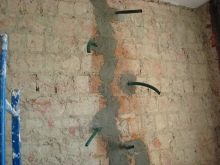
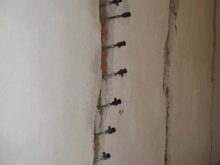
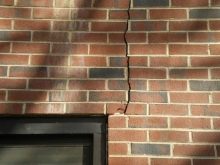
Peculiarities
Cracking on brick wall surfaces is a bad sign. However, with a correctly laid foundation and correct masonry, cracks should not occur.
Any visible flaw signals non-compliance with the standards of construction or use and needs to be immediately corrected for the cause of its appearance. The level of difficulty in sealing cracks in wall surfaces depends on their thickness and depth (sometimes you have to disassemble the required area of the brickwork).
You can fill the crack with your own hands if you follow our recommendations. We will help you fix any imperfections (eg cracked surface of a load-bearing wall).
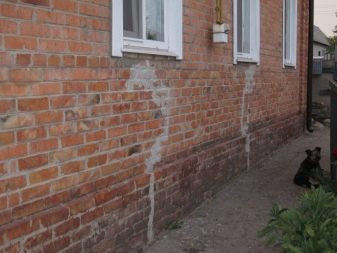
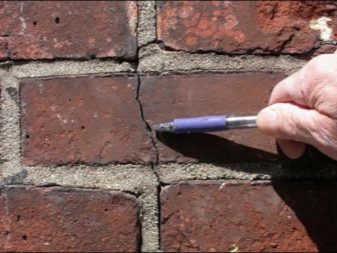
Causes of cracks
There are several reasons for this frustrating problem.
- The absence or inadequacy of the link between the blocks. It manifests itself in the form of a vertical crack along the entire height of the wall (occurs during the construction of an extension to an existing building or if the correctness of the work is not observed). You can get rid of the gap only if a preliminary screed is made with a reinforced belt.
- Disadvantages when laying the foundation of the building: pouring the foundation to a shallow depth (less than the level of soil freezing), the use of granular or mineral blocks, the use of concrete with poor strength and resistance to frost. External manifestations: crevices in corners or rapidly growing cracks in the tops of brick wall surfaces.
This can be avoided by strengthening the perimeter of the foundation by creating a belt of concrete.

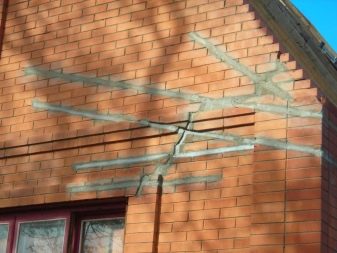
- Erroneous determination of soil quality, due to which errors occur when taking into account the load. This also includes soil deformation due to vibrations, natural phenomena (such as active groundwater), as well as work performed in the vicinity of the site. All this leads to the appearance of large cracks along the entire surface of the walls.
- Settlement of the structure during the first year of operation. This manifests itself in the form of small and shallow gaps, which do not further increase in size. To eliminate them, only minor repairs need to be made.
- Heavy load on brickwork... Cracks occur in areas of greatest stress. To avoid this, you need to distribute the load evenly and make a screed in the necessary places.
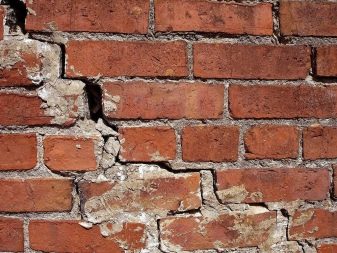
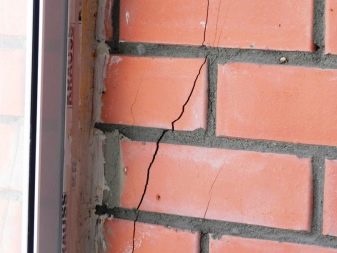
Recommendations for eliminating defects on a brick wall
In order to close a crack in the wall of a brick house, you should follow a simple instruction:
- carefully inspect the entire building, recognize and eliminate cracks;
- periodically check the condition of wall surfaces;
- if the slightest cracks are found, you must immediately do everything possible to prevent the spread of defects;
- when cracks form, it is necessary to clear the necessary inner area of the cracks, as well as to maximize the interaction with finishing agents;
- after checking the walls and processing the cracks, the detected cavities should be covered and external insulation (or decoration) should be made.
Before determining the cause of the flaw, it is pointless to do anything to fix it.

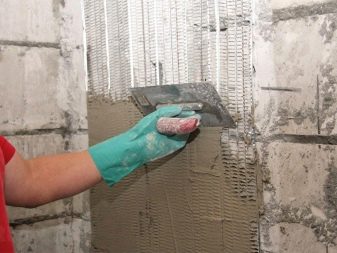
In addition, it is necessary to continuously check the rate of crack growth. For this, the gap must be marked with markings from a putty composition or concrete mortar. Desirable strip sizes are 100x40mm with a layer thickness of less than ten millimeters. There is also an easier method using paper. Check for breaks every day for five weeks. If problems arise, a major overhaul of the base of the structure and the help of a professional are required.
It is worth remembering that a crack width of more than twenty millimeters is critical. In such a situation, an auxiliary reinforcement of the edges of the cracks and the strengthening of brick structures are necessary. Destruction-prone areas need to be dismantled.
If, after checking, you notice that the crack has not increased, then you can use a simple method to seal the gap in the brick wall.
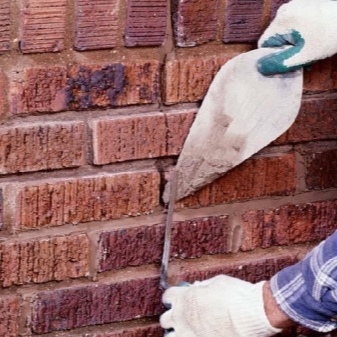
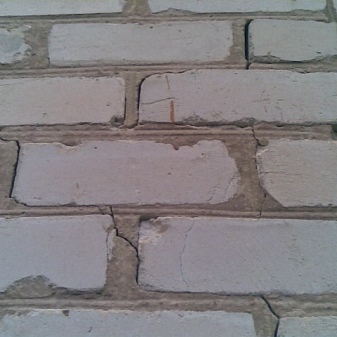
Crack fixation methods
It is worth remembering that the appearance of vertical crevices with a width of ten millimeters or more is a harbinger of the destruction of the walls of the structure. Therefore, it will not be possible to repair this crack with cement mortar without a strong metal screed. In this regard, there are several repair options.
- Driving in special anchors made of metal into dowels mounted on the edges of the crack.
- Installation of longitudinal metal brackets with bends at the edges into pre-made holes in wall surfaces (later they should be covered with cement mortar). This method is the easiest and most reliable when correcting through cracks from the outside.

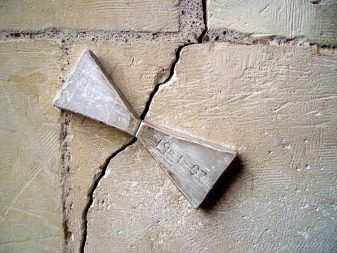
- Reinforcement of brickwork from the inside with special fastening joints. When mounting fasteners into the wall surface, they must be recessed to a great depth (more than half of the entire wall thickness). It is quite possible to alternate fasteners. In practice, the filling of gaps in brick wall surfaces is carried out after the installation of the fixing structures.
- Using reinforcement mesh it is rational, if desired, to strengthen the entire area of the structure, because even a careful calculation of the foundation does not guarantee the absence of the risk of shrinkage. When choosing a method and material for eliminating cracks, it is necessary to take into account the forthcoming exterior finish. All parts made of metal material are treated with anti-corrosion compounds and masked by painting or plastered over with plaster.
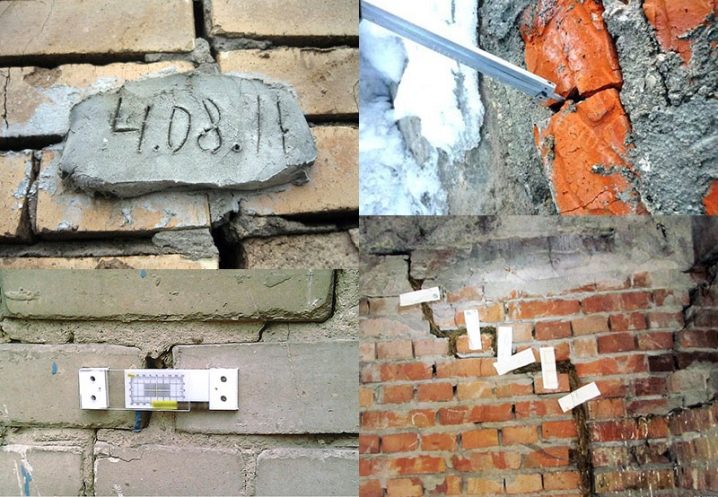
How to repair cracks
Compositions for sealing gaps depend on the location of the flaws (from the inside, outside the house, or even under the window). Inside the room, it is possible to tighten the crack with a gypsum-based composition or a mixture of lime and cement. For outdoor installation, it is better to choose the materials that are most resistant to moisture (otherwise, the finish will not last long).
- For minor cracks (less than five millimeters wide) repair with cement mortar is suitable. In situations where shrinkage microscopic cracking does not exceed one millimeter, it is better to cover them with epoxy resin.
- For defects with a length of five to ten millimeters the embedding can be done with a mixture of cement and sand in a ratio of 1: 2 or 1: 3. To achieve a plastic consistency, add water.
- For more problematic cracks in brick wall structures (as well as in structures with an air layer), foam for installation will be an excellent solution. Such material requires mandatory protection from sunlight, therefore, after hardening, the foaming surpluses are removed.
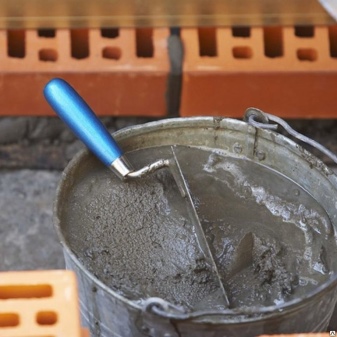
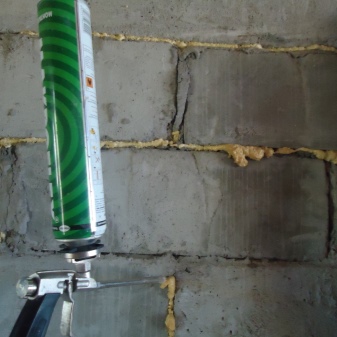
- For defects of various types a cement composition with the addition of polymers from the category of M400 grades is suitable. The compositions are passed through a fine grate with medium-sized grains of sand or wood glue based on polyvinyl acetate and water. PVA in such cases is added in excess (from one liter per bucket) and added to the composition last.
- For problem areas of the wall (inside or outside), you can use a silicone based sealant. The advantages of such a tool include plasticity and a long service life of the material, tolerance to changes in temperature and humidity, and the convenience of sealing cracks with an assembly gun. The disadvantage of this method is large financial costs, so it is not suitable for large areas and volumes.
- If it is necessary to eliminate defects from the outside and in the presence of an outdated solution, mixtures with the addition of brick crumbs are used.
At the end of the repair, the condition of the brick surfaces must be carefully inspected within two months.
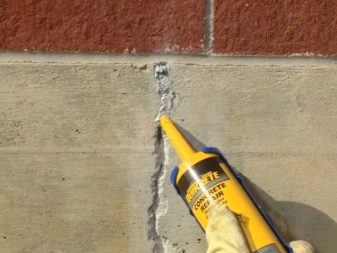
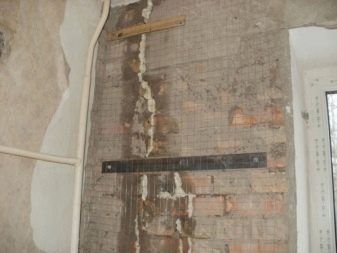
You will learn more about how to properly repair a crack in the wall of a brick house in the following video.












The comment was sent successfully.